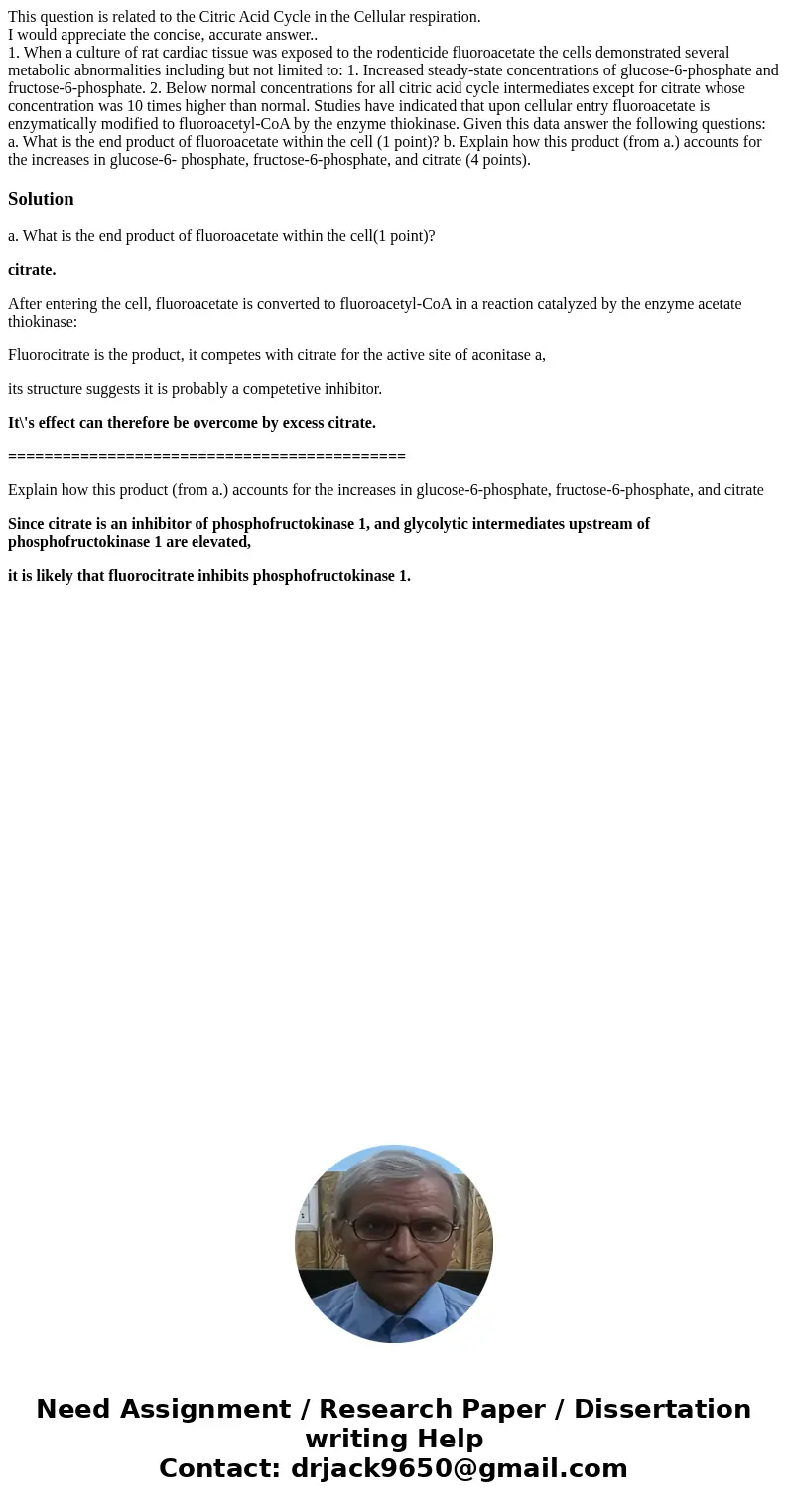This question is related to the Citric Acid Cycle in the Cel
Solution
a. What is the end product of fluoroacetate within the cell(1 point)?
citrate.
After entering the cell, fluoroacetate is converted to fluoroacetyl-CoA in a reaction catalyzed by the enzyme acetate thiokinase:
Fluorocitrate is the product, it competes with citrate for the active site of aconitase a,
its structure suggests it is probably a competetive inhibitor.
It\'s effect can therefore be overcome by excess citrate.
============================================
Explain how this product (from a.) accounts for the increases in glucose-6-phosphate, fructose-6-phosphate, and citrate
Since citrate is an inhibitor of phosphofructokinase 1, and glycolytic intermediates upstream of phosphofructokinase 1 are elevated,
it is likely that fluorocitrate inhibits phosphofructokinase 1.

 Homework Sourse
Homework Sourse